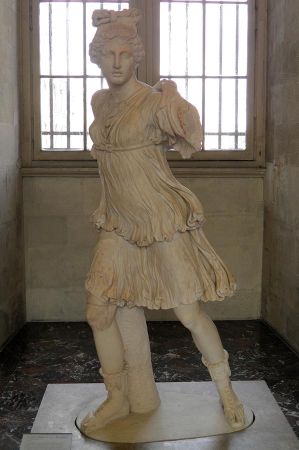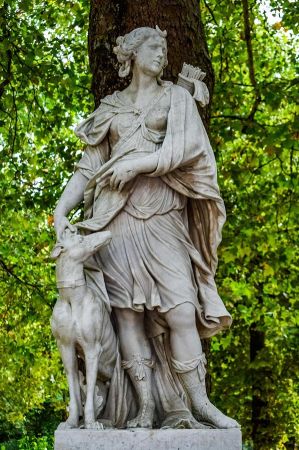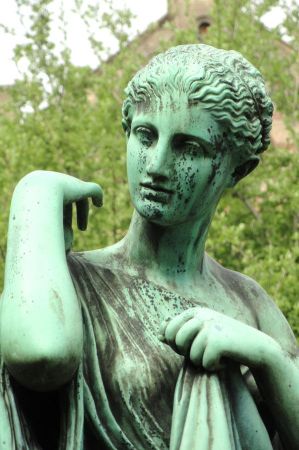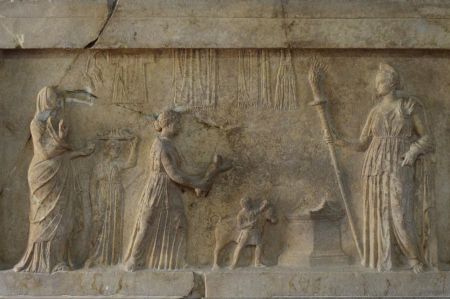Artemisia - Ruler of Ancient Halicarnassus
- Written by Portal Editor
Artemisia was a daughter of Lygdamis. Around 480 BC, she ruled Halicarnassus, the modern-day Bodrum, as guardian of her son Pisindelis. She was subject to the suzerainty of the Persian King Xerxes I.
After her husband's death, she assumed control of Halicarnassus and distinguished herself through her courage and heroism during various battles. She fought on the Persian side and commanded the five participating ships from Halicarnassus, Cos, Nisyros, and Calydna.
 Artemisia was the only female troop leader in the naval battles of Artemision and Salamis. Without any external pressure, the extremely daring Artemisia participated in the battles of Artemision and Salamis in 480 BC.
Artemisia was the only female troop leader in the naval battles of Artemision and Salamis. Without any external pressure, the extremely daring Artemisia participated in the battles of Artemision and Salamis in 480 BC.
Artemisia participated in Xerxes I's campaign against Greece in 400 BC and, during the expedition, commanded the five ships she contributed, which, according to the historian Herodotus (7:99), were "the most excellent in the entire fleet after Sidon."
Herodotus rightly praises her determination and wisdom, as well as her influence with the Great King, but some details of her actions have been embellished anecdotally or even invented.
 According to Herodotus, she advised Xerxes I against the Battle of Salamis and proposed a siege of the Greeks.
According to Herodotus, she advised Xerxes I against the Battle of Salamis and proposed a siege of the Greeks.
All of Xerxes' other military councils and allies, however, advocated for the naval Battle of Salamis.
To justify her position, Artemisia stated that the Greek fleet was superior to the Persian one; moreover, the entire Persian land army would suffer if the fleet were destroyed by the enemy.
Instead, Xerxes should quickly advance with his land army to the Peloponnese; The Greeks, who were already lacking provisions on Salamis, would then disperse, abandon Athens, and return to their hometowns.
The Battle of Salamis
 During the Battle of Salamis, she was able to escape the siege by sinking one of her own ships. This military feat, honored by Xerxes I, earned her the task of bringing Xerxes I's sons to safety in Ephesus after the lost battle.
During the Battle of Salamis, she was able to escape the siege by sinking one of her own ships. This military feat, honored by Xerxes I, earned her the task of bringing Xerxes I's sons to safety in Ephesus after the lost battle.
Artemisia then participated in the Battle of Salamis and is said to have performed great deeds. According to Plutarch, she was able to recover the body of Xerxes' brother Ariamenes and bring it back to the Great King.
The Athenian fleet commanders had been ordered to capture Artemisia without fail; whoever succeeded would receive a reward of 10,000 drachmas.
The Athenians were outraged that a woman would dare to fight against them.
 Polyaenus describes the ruse used in the Battle of Salamis as follows: Although the Persians were already fleeing before the Greek ships, when they were overtaken, she ordered her marines to lower the Persian flags. She ordered her pilot to attack one of her own Persian ships. This led the Greeks to believe it was an allied ship, so they turned away and joined other ships. Artemisia, however, having escaped the danger, sailed quickly home.
Polyaenus describes the ruse used in the Battle of Salamis as follows: Although the Persians were already fleeing before the Greek ships, when they were overtaken, she ordered her marines to lower the Persian flags. She ordered her pilot to attack one of her own Persian ships. This led the Greeks to believe it was an allied ship, so they turned away and joined other ships. Artemisia, however, having escaped the danger, sailed quickly home.
After the lost battle, Mardonius recommended to the Persian Great King that he attempt a new attack on the Peloponnese. He should either lead this campaign personally or leave it to him, Mardonius, and retreat himself. Before making his decision, however, Xerxes again consulted Artemisia, who firmly advised the king to return home. While Xerxes marched overland to the Hellespont and then on to Sardis, she sailed to Ephesus, carrying several of the king's illegitimate sons.
Please read as well:
Bicycle tour to Kallmünz - Pielenhofen an der Naab
Diocletian's Palace in Asphalatos, then Spalato and today Split
